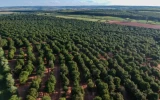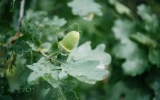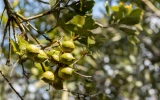How Far Apart Can You Plant Macadamia Trees?
Macadamia tree requires space not just to spread its branches, but also to allow its roots to grow unimpeded, ensuring the tree receives the nutrients and water it needs. In this article, we'll find out the optimal spacing for macadamia trees to ensure that each tree has enough sunlight and air circulation to thrive.
You'll need to maintain a distance of 15 to 20 feet between each tree, to provide your macadamia trees with enough room for air circulation and root expansion. If you're planting a large orchard, consider spacing the rows 25 to 30 feet apart to allow for vehicle access.
When planning your macadamia orchard, consider factors such as sunlight exposure, the variety of macadamia trees and their size at maturity, the root system, pollination, and maintenance access. As you read further, we'll take an in-depth look at how you will adjust spacing given these factors.
The optimal spacing between macadamia trees when starting a new macadamia farm is important for maximizing yield and profits.
Summary
- Optimal spacing between macadamia trees, ranging from 15 to 20 feet, helps ensure proper sunlight penetration, air circulation, and access to soil nutrients and water.
- The recommended spacing between macadamia trees also allows machinery to move around the orchard without causing damage to the trees, provides sufficient clearance for workers to maneuver during harvesting and maintenance, and prevents intense competition for resources, leading to stunted growth and reduced yields.
- If the recommended spacing of macadamia trees is 15 to 20 feet between each tree, there would be approximately 278 to 484 macadamia trees per hectare.
- The ideal macadamia tree density per acre would fall within the range of approximately 109 to 194 trees per acre, given that the spacing between trees is 15 or 20 feet.
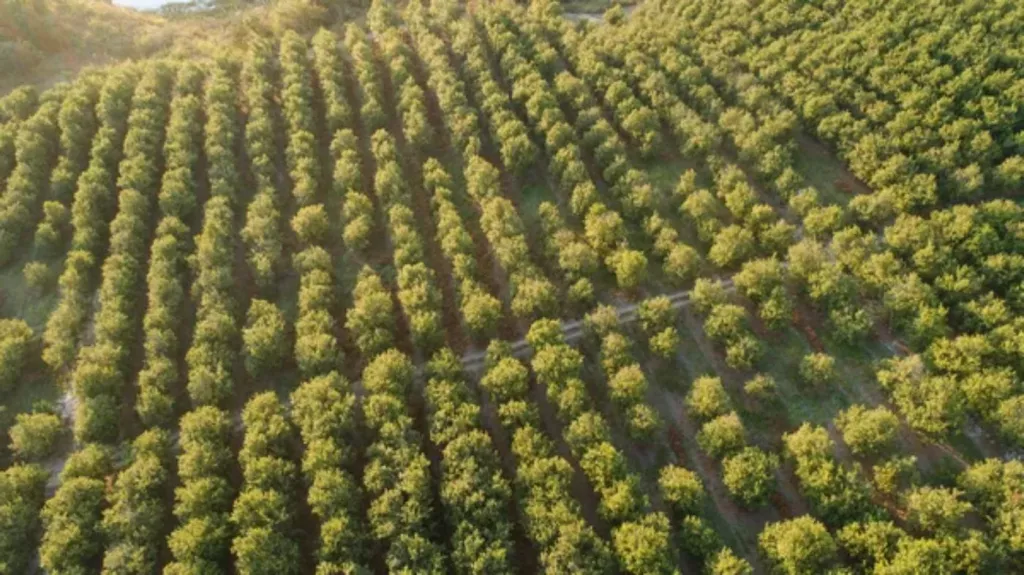
On this page:
Optimal Distance Between Macadamia Trees
To provide your macadamia trees with enough room for air circulation and root expansion, you'll need to give them plenty of space. Planting them too close can lead to overcrowding and reduced yields.
For optimal growth, maintain a distance of 15 to 20 feet between each tree. If you're planting a large orchard, perhaps consider spacing the rows 25 to 30 feet apart to allow for vehicle access.
The following are several reasons why this spacing is considered the best for macadamia trees:
This spacing allows for proper sunlight penetration and air circulation
Macadamia trees, like many other plants, require ample sunlight for photosynthesis, which is essential for their growth and overall health.
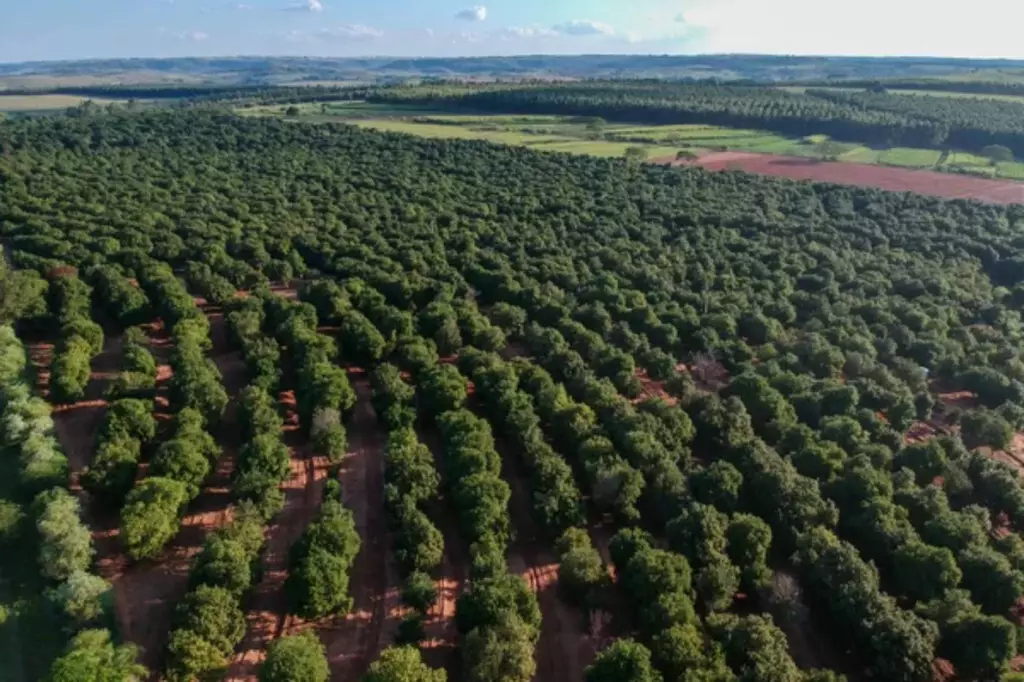
Adequate sunlight exposure ensures that the trees can efficiently produce energy from sunlight, which is vital for their development and production of macadamia nuts.
With the right spacing, each tree can receive the necessary amount of sunlight without being overshadowed or crowded by neighboring trees.
Good airflow between trees also helps in reducing the risk of diseases by preventing the buildup of humidity and minimizing the spread of pathogens.
Furthermore, adequate air circulation facilitates better pollination, which is crucial for the development of macadamia nuts. Pollen movement between trees is more effective when there is sufficient space between them, allowing for improved fertilization and fruit set.
It gives the trees better access to soil nutrients and water
In an orchard setting, proper spacing between macadamia trees prevents overcrowding of roots, which can lead to intense competition for soil nutrients and water.
With the recommended spacing, each tree has ample space for its root system to expand and access the necessary nutrients and moisture in the soil without being hindered by neighboring trees.
Adequate access to soil nutrients is essential for the healthy growth and development of macadamia trees. The spacing allows the roots to spread out and efficiently absorb essential minerals and elements from the soil, supporting robust foliage, flower production, and nut development.
This spacing facilitates ease of maintenance activities
This spacing allows enough room for machinery to move around the orchard without causing damage to the trees. Maintenance activities often require the use of tractors, mowers, and other machinery to access the trees for tasks such as pruning and pest control.
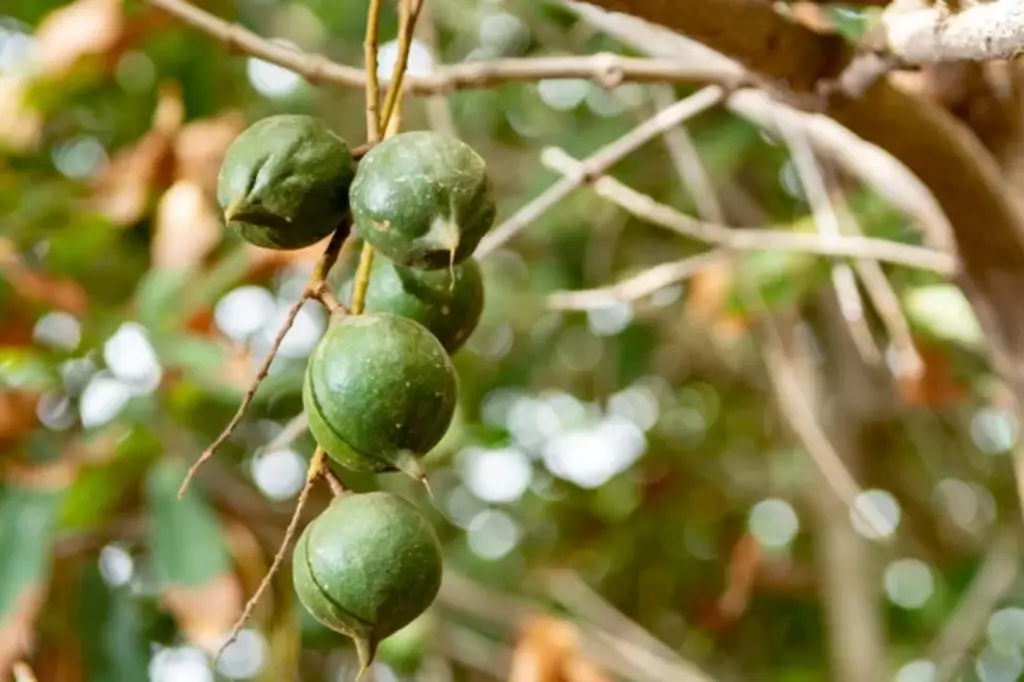
Additionally, it provides sufficient clearance for workers to move around the orchard comfortably. During harvesting and maintenance activities, workers need space to maneuver between the trees to carry out their tasks effectively.
It prevents competition between trees
When macadamia trees are planted too closely together, they compete for resources, leading to stunted growth, reduced yields, and increased susceptibility to diseases and pests.
In contrast, appropriate spacing ensures that each tree has ample space to develop a healthy root system without infringing on neighboring trees.
With adequate spacing, the roots of each tree can access water without intense competition from nearby trees. This is particularly important in regions with limited water resources or where irrigation is required, as it allows for efficient water use and reduces the risk of water stress among the trees.
Furthermore, proper spacing minimizes competition for nutrients in the soil. Each tree can access the necessary nutrients without being overshadowed or outcompeted by neighboring trees.
Optimal Macadamia Tree Density per Hectare
| Spacing Between Trees (in feet) | Number of Trees per Hectare |
|---|---|
| 15 | 484 |
| 20 | 278 |
The recommended spacing for macadamia trees is 15 to 20 feet between each tree. To calculate the number of macadamia trees per hectare, we first need to convert the spacing from feet to meters, as hectare is a metric unit.
- 1 foot is approximately equal to 0.3048 meters. Therefore, the recommended spacing of 15 to 20 feet between each tree is equivalent to 4.572 to 6.096 meters.
Now, let's calculate the number of trees per hectare using the following formula:
Number of trees per hectare = 10,000 / (spacing in meters)^2
For a spacing of 4.572 meters: Number of trees per hectare = 10,000 / (4.572)^2 ≈ 484 trees
For a spacing of 6.096 meters: Number of trees per hectare = 10,000 / (6.096)^2 ≈ 278 trees
So, if the recommended spacing of macadamia trees is 15 to 20 feet (4.572 to 6.096 meters) between each tree, there would be approximately 278 to 484 macadamia trees per hectare.
Ideal Macadamia Tree Density per Acre
| Spacing Between Trees (in feet) | Number of Trees per Acre |
|---|---|
| 15 | 194 |
| 20 | 109 |
The ideal macadamia tree density per acre can be determined by calculating the number of trees that can be accommodated within the given spacing of 15 to 20 feet between each tree.
First, let's calculate the number of trees per acre using the spacing of 15 feet:
1 acre is equal to 43,560 square feet.
If we assume a square planting layout, the area occupied by each tree would be the square of the spacing between them, which is 15 feet * 15 feet = 225 square feet.
The number of trees per acre can be calculated by dividing the total acreage by the area occupied by each tree:
43,560 square feet / 225 square feet = 193.6 trees per acre.
Now, let's calculate the number of trees per acre using the spacing of 20 feet:
Using the same method as above, the area occupied by each tree with a spacing of 20 feet would be 20 feet * 20 feet = 400 square feet.
``
The number of trees per acre using this spacing would be 43,560 square feet / 400 square feet = 108.9 trees per acre.
``
Based on these calculations, the ideal macadamia tree density per acre would fall within the range of approximately 109 to 194 trees per acre, depending on whether a spacing of 15 or 20 feet is used. This range allows for optimal growth and development of the Macadamia trees while ensuring sufficient space for each tree to thrive.
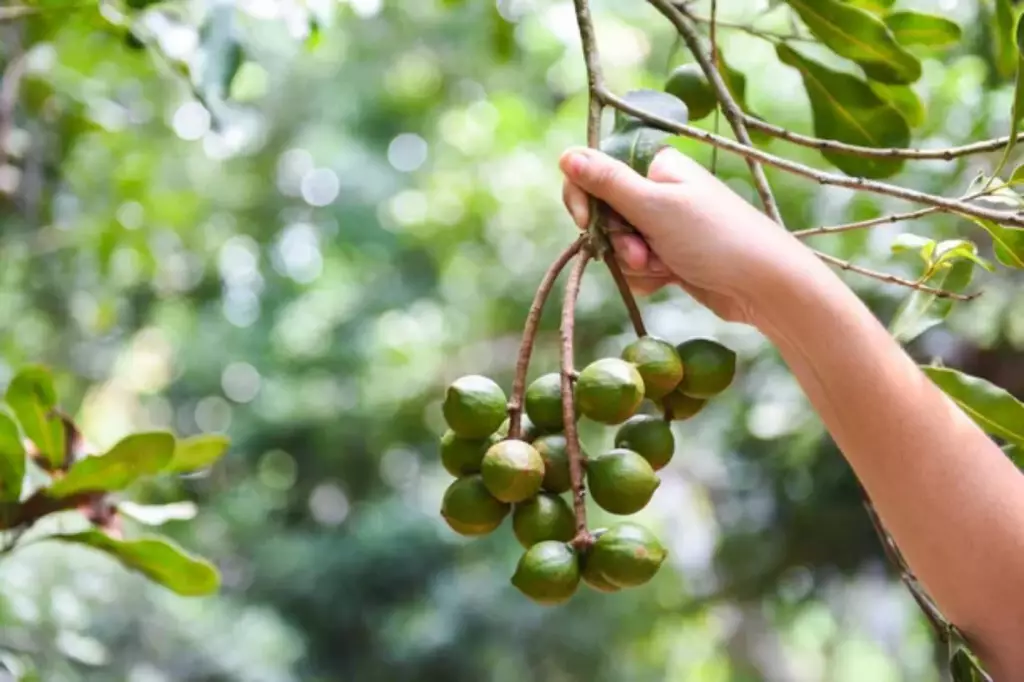
Factors to Consider for Macadamia Tree Spacing
When planning your macadamia orchard, considering the right spacing between trees is crucial for their health and productivity. Here's what you should keep in mind:
Macadamia trees thrive in sunny conditions
When planning the spacing between macadamia trees, growers must consider the orientation of the orchard in relation to the sun and the potential for shading from nearby structures or taller trees.
Proper orientation can maximize sunlight exposure throughout the day and promote balanced growth across the entire orchard.
In regions with intense sunlight and high temperatures, wider spacing between macadamia trees may be beneficial to reduce competition for sunlight and minimize the risk of sunburn on the exposed fruit.
Conversely, in cooler or more shaded areas, closer spacing may be necessary to ensure that each tree receives an adequate amount of sunlight for optimal growth and productivity.
You might also want to consider the long-term implications of sunlight exposure on tree spacing. As macadamia trees mature, their canopies may expand, potentially leading to increased shading between trees.
Therefore, growers must anticipate the future growth of the trees and plan the initial spacing to account for this expansion while maintaining sufficient sunlight exposure for each tree.
Different macadamia tree varieties have varying space requirements
The Macadamia tetraphylla, a type of macadamia tree, can handle closer spacing compared to others, owing to its tolerance to cooler conditions.
This variety's ability to thrive in cooler climates allows for more flexibility in spacing, as it can withstand potentially denser planting arrangements while still receiving adequate sunlight for optimal growth and nut production.
Conversely, other varieties may require wider spacing to ensure that each tree receives sufficient sunlight and airflow, particularly in warmer climates where competition for resources is higher.
Project the mature size of your trees to avoid crowding as they grow
In general, the spacing between macadamia trees is influenced by the following factors related to the size at maturity of the trees:
Their spreading canopy
Macadamia trees develop a broad and dense canopy at maturity, which necessitates sufficient space between trees to allow for proper light penetration and air circulation.
Adequate spacing helps prevent overcrowding and ensures that each tree receives the sunlight needed for optimal photosynthesis and fruit production.
Their extensive root system
One fact about macadamia trees is that their roots can extend over a wide area, necessitating appropriate spacing to avoid root competition between neighboring trees.
Sufficient space between trees allows the roots to access water and nutrients without excessive competition, promoting healthy growth and development.
Cross-pollination between trees should be possible
Macadamia trees can be cross-pollinated, meaning that they sometimes rely on the transfer of pollen between different trees to ensure successful fertilization and nut development.
Proper spacing between trees helps facilitate the movement of pollinators, such as bees and other insects, and maximizes the chances of successful cross-pollination.
However, for successful pollination, the distance between trees should allow for easy access by pollinators. Bees, for example, are known to forage within a certain radius of their hives, so having trees within this range increases the likelihood of effective pollination.
Additionally, having trees too closely spaced can hinder the movement of pollinators between them, reducing the chances of successful cross-pollination.
Furthermore, clustering trees too closely together can create barriers to pollinator movement while spacing them too far apart may limit the opportunities for pollen transfer. Note that insufficient pollination is one of the reasons why macadamia trees are not producing nuts.
